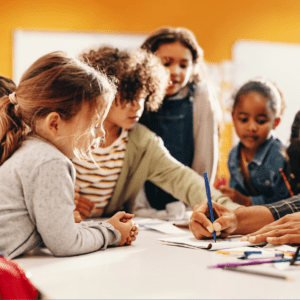Collaborative and cooperative learning are approaches that harness the power of group dynamics to stimulate learning. These methods encourage students to work together, share ideas, and actively participate in their education. This article provides insights on how teachers can promote such learning in their classrooms.
Understanding Collaborative and Cooperative Learning
Collaborative learning is an educational approach where students work together in a group to solve a problem, complete a task, or create a product. Cooperative learning is similar, but it’s more structured, with specific roles assigned to each group member. Both approaches emphasize shared responsibility, interaction, and mutual learning.

The Importance of Collaborative and Cooperative Learning
These learning methods offer several benefits:
- Improved Understanding: As students articulate their thoughts and defend their views to peers, they deepen their understanding of the material.
- Development of Soft Skills: Collaborative tasks help develop social, leadership, and communication skills—competencies that are critical in today’s interconnected world.
- Enhanced Motivation: Working in groups can foster a sense of community, making learning more enjoyable and motivating.
Strategies to Promote Collaborative and Cooperative Learning
1. Create Diverse Teams
Form student groups intentionally, considering factors like skills, learning styles, and personalities to create balanced teams. Diversity can stimulate richer discussions and collaboration.
2. Define Clear Goals and Roles
For cooperative learning, clearly define the task and the roles each team member should play. This promotes accountability and ensures that everyone contributes to the task.
3. Use Collaborative Learning Structures
Implement cooperative learning structures like “Think-Pair-Share,” “Jigsaw,” or “Roundtable.” These techniques provide a structured framework for cooperative learning, guiding student interaction and discussion.
4. Facilitate, Don’t Dictate
As a teacher, act as a facilitator rather than a director. Provide guidance and support when needed, but let the students take the lead in their learning.
5. Encourage Reflection
After group tasks, encourage students to reflect on their group’s dynamics, their contributions, and what they learned from the experience. This reflection can enhance learning and improve future group work.
6. Assess Group Processes
When grading group projects, consider the process, not just the product. How did students work together? Did everyone contribute? This can motivate students to participate fully and collaborate effectively.
Conclusion
Promoting collaborative and cooperative learning can significantly enhance the learning experience, fostering critical thinking, and interpersonal skills while making learning more engaging and enjoyable. By implementing the strategies outlined above, educators can create a dynamic and interactive learning environment that prepares students for the collaborative nature of the modern world.





